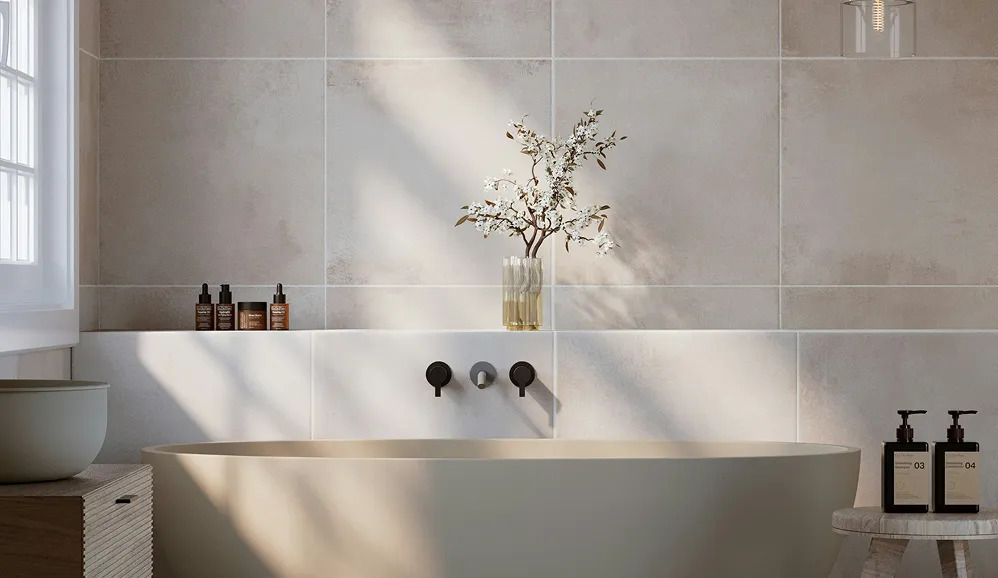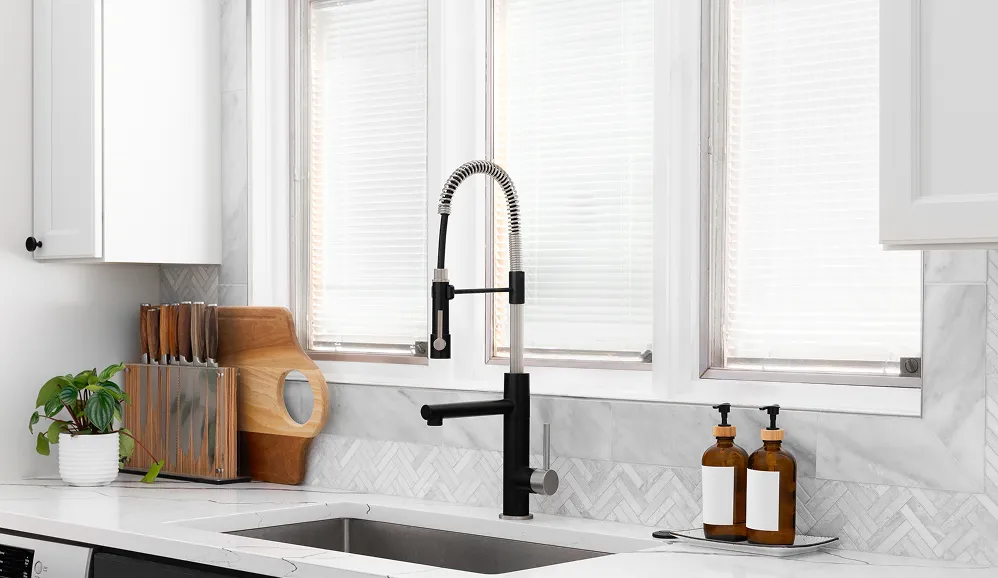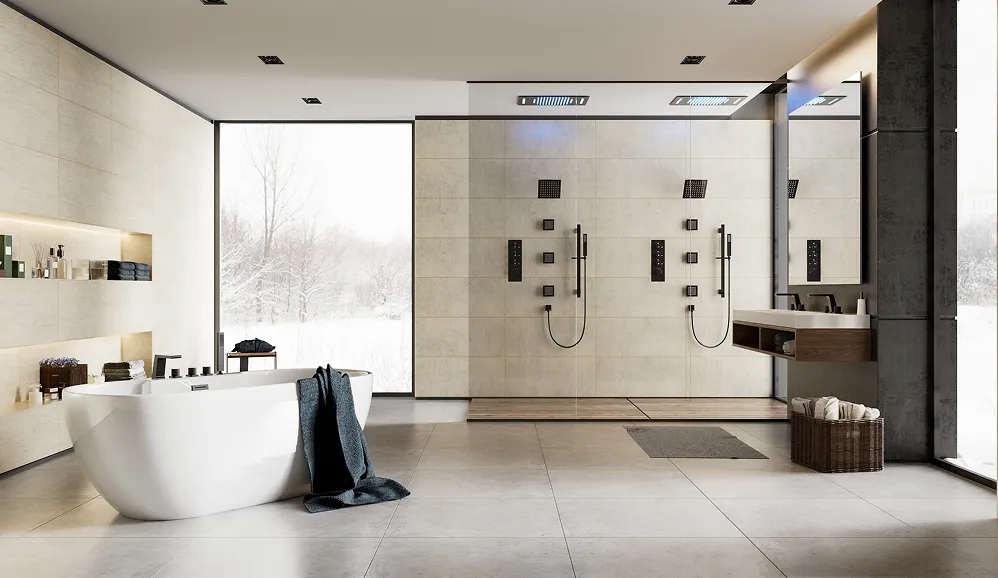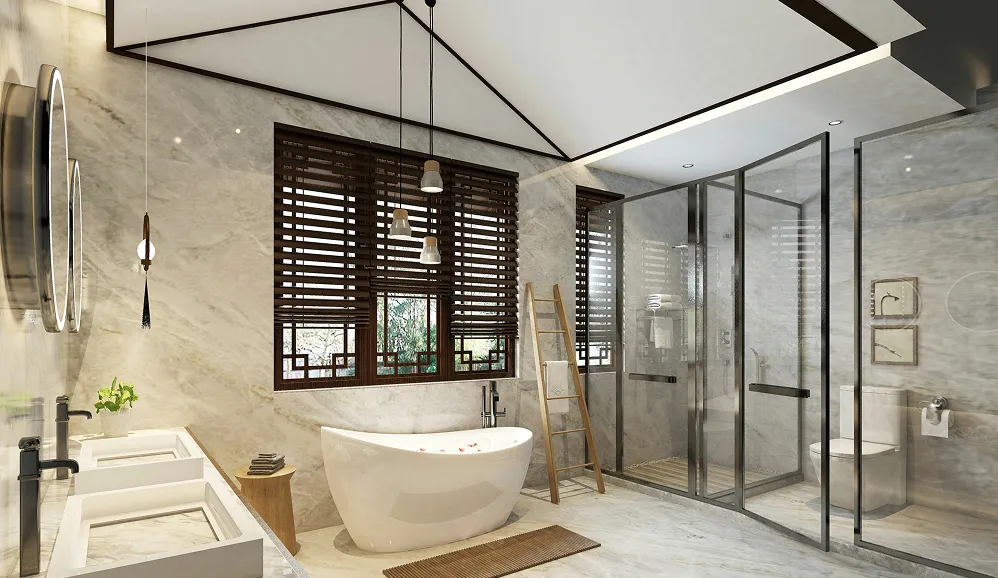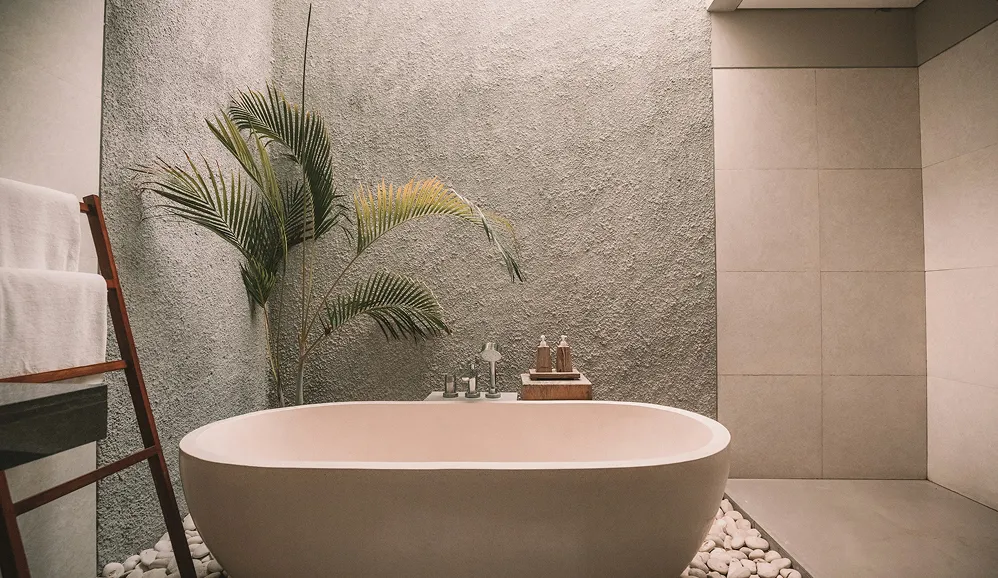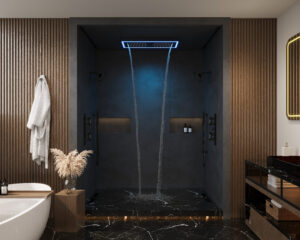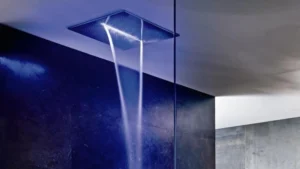There’s nothing worse than starting your day with a weak, trickling shower. It’s more than just a little annoyance; it’s a frustrating experience that can completely throw off your morning. The good news? You don’t have to live with it, and the fix is often way simpler than you’d think.
The first step toward a more powerful spray is figuring out why your pressure is low in the first place.
Pinpointing the Cause of Your Low Shower Pressure
Before you can boost your shower’s water pressure, you have to play detective. A weak flow can come from a few different places, and just guessing at the cause can lead to wasted time and money on “solutions” that don’t actually solve anything. Is the problem just in one shower, or is it a sign of a bigger, house-wide issue?
Often, the culprit is pretty straightforward. Over time, mineral deposits from hard water—think limescale and calcium—can build up inside the tiny nozzles of your shower head. This buildup acts like a dam, slowly choking off the water flow and turning a once-strong spray into a sad drizzle. I’ve seen this countless times; it’s a common problem that many homeowners overlook.
To help you get to the bottom of it faster, here’s a quick way to diagnose what might be going on.
Quick Diagnosis: Common Causes of Low Shower Pressure
Use this table to quickly identify the potential source of your weak shower pressure based on common symptoms.
| Symptom | Likely Cause | Initial Action |
|---|---|---|
| Only one shower has low pressure. | Clogged shower head or flow restrictor. | Clean or replace the shower head. |
| All faucets have low pressure. | Main water valve issue or failing PRV. | Check the main shutoff valve; test the PRV. |
| Low pressure with hot water only. | Sediment buildup in the water heater. | Flush the water heater tank. |
| Gradual pressure loss over time. | Mineral buildup in pipes or a hidden leak. | Inspect visible pipes; consider a plumber. |
This table is a great starting point, but a little hands-on investigation will confirm your suspicions and get you on the right path to a better shower.
Is It Just Your Shower or the Whole House?
Let’s narrow down the possibilities with a quick check. Go turn on the faucet in your bathroom sink and see how its pressure compares to your shower. If the sink’s flow is strong but the shower is weak, the problem is almost certainly confined to the shower head or its connected parts.
But what if every faucet in the house is sputtering? Now we know the issue is more systemic. This points to a problem affecting your entire plumbing system. The most common culprits here are:
- A partially closed main water valve: This is the master valve that controls all water coming into your home. It’s surprisingly easy for it to get knocked or turned by accident, especially if it’s in a high-traffic area like a garage or utility closet.
- A failing pressure-reducing valve (PRV): This little device is a lifesaver for your pipes, regulating the water pressure from the city’s supply to a safe level for your home. But when it starts to fail, that pressure can drop off a cliff.
- Widespread pipe corrosion or leaks: This is more common in older homes. Over the decades, galvanized or copper pipes can corrode from the inside, restricting flow. Or, a small, hidden leak somewhere in the system could be quietly diverting water and tanking your pressure.
My Pro Tip: Don’t forget to test your hot and cold water separately. If the low pressure only happens when you turn on the hot water, the problem is likely your water heater. Sediment can build up in the bottom of the tank and clog the outlet pipe, which will restrict hot water flow to every tap in your house.
This decision tree gives you a simple visual for the diagnostic process, all based on your home’s water pressure reading.

As the infographic shows, the sweet spot for residential water pressure is between 40 and 60 PSI. Knowing where your home’s pressure falls on this scale is key to figuring out your next steps.
Simple Fixes You Can Tackle Today
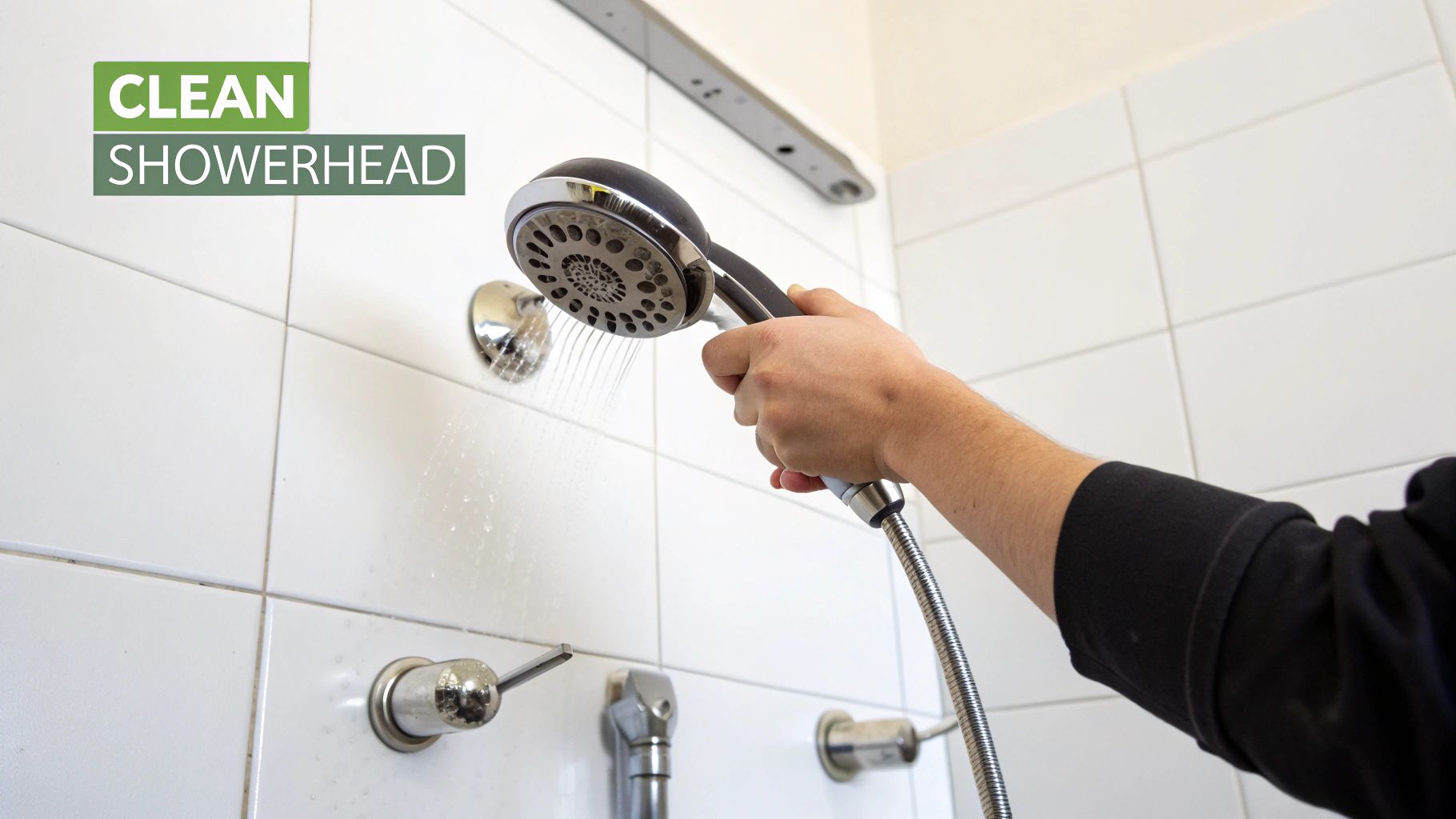
Alright, now that you have a better idea of what might be causing your weak shower, let’s roll up our sleeves and get into the easy fixes. You’d be surprised how often a little TLC for your shower head is all it takes to get that powerful spray back. You don’t need to be a DIY guru for these.
I’ve seen it countless times—years of mineral buildup are the real villain behind a disappointing shower. This is a huge issue in areas with hard water, where limescale and calcium deposits slowly choke the tiny nozzles on your shower head. The result? A weak, sputtering spray that just seems to get worse. Luckily, this is one of the most straightforward problems to solve.
Deep Clean Your Shower Head
First things first: give that shower head a really good cleaning. It’s not just the nozzles on the outside that get blocked. Sediment and gunk can build up inside the shower head itself, creating a major roadblock for your water flow.
A simple, deep clean often works wonders. You just need a few things you probably already have:
- A plastic bag big enough to fit over the shower head
- A rubber band or a zip tie
- Good old distilled white vinegar
The process couldn’t be easier. Just fill the plastic bag with enough vinegar to completely submerge the face of the shower head. Carefully slip the bag over the head, making sure all those clogged nozzles are soaking, and then cinch it tight with the rubber band.
For a really effective (but gentle) clean, let the shower head soak for at least a few hours. If you’re dealing with some serious buildup, leaving it overnight is your best bet. The acetic acid in the vinegar is fantastic at dissolving stubborn mineral deposits without messing up your fixture’s finish.
Once it’s done soaking, take off the bag and grab an old toothbrush to gently scrub away any gunk left on the nozzles. Then, turn on the shower for a minute or so to flush out all the debris you just loosened up. For a more detailed guide, check out our post on how to clean your shower head with vinegar. It’s a simple bit of maintenance that can dramatically improve your shower pressure.
Find and Remove the Flow Restrictor
If a thorough cleaning didn’t bring back the power, the next culprit to investigate is the flow restrictor. This is a small plastic or rubber disc tucked away inside the shower head’s connection point. Its job is to limit the gallons per minute (GPM) to conserve water.
While water conservation is great, these restrictors can sometimes be a bit too aggressive, especially if your home already has lower-than-average water pressure. Popping it out is a quick way to increase water pressure in your shower.
To get to it, you’ll need to unscrew the shower head from the shower arm. Peer inside the threaded base of the shower head—you’re looking for what is often a colorful little disc with a tiny hole in the middle. You can usually pry it out with a paperclip or a small flathead screwdriver. Be gentle! Once it’s out, screw the shower head back on and give it a try. For many people, this one small change makes a world of difference.
Upgrading Your Shower Head for Better Flow
So, you’ve deep-cleaned your shower head and even tried removing the flow restrictor, but the water pressure is still more of a trickle than a torrent. When that happens, it’s usually time to think about an upgrade.
Don’t worry, this doesn’t mean calling a plumber or starting a major renovation. Swapping out your old fixture for a modern high-pressure shower head is one of the most effective—and wallet-friendly—ways to tackle low-pressure problems. It’s not about just grabbing any new model off the shelf; it’s about finding one with technology specifically designed to boost your flow.
These specialized shower heads are engineered to deliver a powerful, satisfying stream even if your home’s water pressure is just so-so. They aren’t magic. Instead, they use some clever physics to make the absolute most of the water they get.
How High-Pressure Heads Boost Flow
The secret sauce behind a great high-pressure shower head is how it handles the water. Instead of just letting water pass through, it funnels it into a smaller, pressurized space known as a compression chamber. This simple step dramatically increases the water’s velocity right before it shoots out of the nozzles.
Think of it like putting your thumb over the end of a garden hose. The amount of water coming out hasn’t changed, but by making the exit smaller, the stream becomes much stronger and travels farther. A high-pressure shower head applies the same principle, just with more sophisticated, precisely engineered nozzles to create that invigorating spray we all crave.
This targeted approach is a huge reason why learning how to increase water pressure in your shower so often points to this simple, effective upgrade. It’s also why these products are flying off the shelves.
The global market for high-pressure shower heads was valued at around $2.7 billion in 2023 and is projected to climb to $4.5 billion by 2032. This growth shows a clear consumer demand for a better shower that combines a powerful feel with modern efficiency. For homes with low pressure, a well-designed model can boost perceived water flow by 20% to 30% or more. You can explore more about these market trends and their drivers in this detailed industry report.
Choosing the Right Type of Shower Head
When you start shopping, you’ll quickly notice a few main types of high-pressure heads. The right one for you really comes down to your personal preferences for style and function.
- Fixed Shower Heads: Also called wall-mount heads, these are the classic, go-to option. They attach directly to the shower arm that extends from your wall. Modern versions come in countless styles, from wide, spa-like “rain” shower heads to more compact models built for high-velocity spray.
- Handheld Shower Heads: These offer fantastic flexibility. Attached to a long, pliable hose, they let you direct the spray exactly where you need it—perfect for rinsing long hair, cleaning the shower walls, or bathing kids and pets. Most come with a docking bracket, so they can function just like a fixed head when you want them to.
- Combination Models: Can’t decide between fixed and handheld? You don’t have to. Combination units give you the best of both worlds. They usually have a large fixed head and a separate, detachable handheld sprayer, with a diverter valve that lets you switch between them or even use both at the same time.
No matter which type you lean toward, the goal is the same: find a product that amps up the pressure and offers spray patterns you’ll actually enjoy. Upgrading your shower head is a small change that can completely transform your daily routine from a frustrating drip to an invigorating blast.
For even more solutions, you can learn more about increasing shower water pressure in our comprehensive guide. Making an informed choice here is a powerful step.
Balancing Powerful Pressure with Water Conservation
It’s a common myth that a powerful, high-pressure shower means you’re stuck with a sky-high water bill. While that might have been the case with older fixtures, modern engineering has completely changed the game. Today, you don’t have to pick between a satisfying shower and a sustainable home.
The secret is finding a shower head designed for efficiency. These innovative models are engineered to deliver a strong, invigorating spray while being remarkably eco-friendly. They’re proof that you can increase water pressure in your shower without feeling guilty about wasting a precious resource. This balance is a huge win, especially if you live in a water-scarce area or just want to lower your environmental footprint.
Smart Designs for a Better Feel
So how do these shower heads create a strong spray with less water? The magic is all in the design. It really comes down to two main technologies: aeration and intelligent nozzle patterns.
- Aerating Shower Heads: These clever fixtures work by infusing the water stream with tiny air bubbles. This makes the droplets feel larger and more substantial, giving you excellent coverage even though you’re using less water. The result is the sensation of high pressure without the high flow rate.
- Laminar Flow Heads: Instead of mixing in air, these heads focus on creating individual, highly concentrated streams of water. The power comes from perfectly engineered nozzles that shoot out firm, focused jets. This gives you that strong, massaging feel that really mimics high pressure.
Many of the best modern shower heads actually combine these features, letting you customize your experience. It’s a huge leap forward from the old water-guzzling models and allows for a powerful shower that’s also efficient.
Globally, the shift toward efficiency is clear. While a traditional shower head could easily use around 12 liters per minute (l/min), today’s water-saving designs have cut this down to about 7.4 l/min. That’s a reduction of over 35%, achieved without sacrificing the experience, all thanks to smarter nozzle design and air induction technology.
The Real Impact on Your Utility Bills
Choosing a water-saving shower head isn’t just an eco-conscious move; it’s a smart financial one, too. When you cut your water consumption with every single shower, the savings on your utility bills really start to add up over the year. Plus, you’re also saving the energy needed to heat all that water, which trims your expenses even more.
Of course, even the most efficient shower head can’t do its job if it’s clogged with mineral buildup. Regular maintenance is absolutely crucial to keeping that flow strong and steady. If you want to learn the best way to keep your fixture in top shape, you can check out our guide on how to clean a shower head. A clean shower head ensures you get the powerful, efficient performance you paid for, day in and day out.
Solving Whole-House Water Pressure Problems
When low pressure isn’t just a shower problem but a house-wide frustration, it’s time to look beyond a single fixture. If every faucet and spigot in your home seems sluggish, the issue likely lies with your main plumbing system. This points away from a simple clogged shower head and toward a central component that governs water flow for the entire property.
Before you start worrying about a massive plumbing bill, let’s start with the simplest and most common culprit: the main water valve. This is the master control for all the water coming into your home, usually tucked away in a basement, crawl space, or utility closet right where the main water line enters. It’s surprisingly easy for this valve to get partially closed by accident during other maintenance, immediately strangling pressure everywhere.
Check Your Main Water Valve
First, you need to find your main shutoff valve. It will typically have either a wheel-like handle (a gate valve) or a lever handle (a ball valve).
A wheel handle should be turned counter-clockwise as far as it will go to ensure it’s fully open. If you have a lever handle, that lever should be running parallel to the pipe. If it’s even slightly angled, you’ve likely found the source of your pressure problems.
Just making sure this valve is completely open can sometimes restore full pressure instantly. It’s a five-minute check that could save you a huge headache and a service call. If you’ve confirmed the valve is wide open but the pressure is still low, the next place to look is the pressure-reducing valve.
Understanding the Pressure-Reducing Valve (PRV)
A pressure-reducing valve, or PRV, is a bell-shaped device installed on your main water line, almost always right after the shutoff valve. Its job is to take the high pressure coming from the municipal supply and step it down to a safe level (typically 50-60 PSI) for your home’s pipes and appliances.
But when a PRV starts to fail, it can cause a significant and often mysterious drop in your home’s water pressure.
Signs of a failing PRV often include:
- Consistently low water pressure throughout the entire house.
- Fluctuating pressure that goes from weak to strong without warning.
- A “water hammer” sound—that’s the banging or vibrating noise you might hear in your pipes.
While adjusting or replacing a PRV is a job best left to a qualified plumber, identifying it as the likely problem makes you a much more informed homeowner. You can have a far more productive conversation with a professional when you can point them in the right direction from the get-go. And remember, mineral buildup can affect more than just shower heads; our guide on removing calcium deposits from faucets can help you tackle issues with other fixtures around the house.
This focus on whole-house solutions reflects what’s happening in the broader home improvement world. With over 4.09 million existing homes sold in the U.S. in 2023, new and remodeling homeowners are increasingly demanding better plumbing performance. The U.S. shower heads market, valued at over $13.3 billion in 2024, is partly driven by this desire for an amazing shower experience, which all starts with addressing system-wide pressure.
Common Questions About Boosting Shower Pressure
Even with the best game plan, it’s natural to have a few questions pop up while you’re trying to solve your low water pressure woes. I’ve been there. Let’s tackle some of the most common uncertainties homeowners run into when figuring out how to increase water pressure in your shower.
Getting the right answers helps you move forward with confidence and sidestep those all-too-common DIY mistakes.
Is It Legal to Remove a Shower Head Flow Restrictor?
This is a big one. Yes, you can physically remove the flow restrictor from your shower head, but whether you should is another story. These little plastic discs are there for a reason—they’re often required by national or local codes to cap water usage at a specific rate, usually around 1.8 to 2.5 gallons per minute (GPM).
Before you start prying it out, I’d strongly suggest doing a quick search for your local water conservation laws. Playing by the rules keeps you out of hot water, especially if you live in an area with water restrictions.
Key Takeaway: Popping out a flow restrictor offers a quick pressure bump, but always put legality and conservation first. Frankly, upgrading to a modern, high-efficiency shower head is a much better move. You’ll get that strong flow you’re after while staying compliant.
How Do I Know When to Call a Plumber?
If you’ve tried the simple DIY fixes and are still staring at a sad, dribbling shower, it’s probably time to bring in a pro. Cleaned the shower head? Checked that the main water valve is wide open? If you’ve done the basics and nothing’s changed, an expert opinion is your next best step.
You should definitely pick up the phone if you:
- Suspect a problem with your home’s pressure-reducing valve (PRV).
- Notice any signs of leaks, no matter how small.
- Experience a sudden drop in pressure that affects the whole house.
For plumbing professionals looking to connect with homeowners experiencing these issues, understanding effective digital marketing strategies for plumbing businesses is crucial for reaching the right audience.
Is a Water Pressure Booster Pump a Good Investment?
A water pressure booster pump can feel like a magic bullet, but it’s really a last-resort solution. I only recommend them when a home’s incoming water pressure from the city supply is consistently low—we’re talking under 40 PSI—and every other fix has been exhausted.
These pumps are fantastic for solving whole-house pressure problems by giving the water an extra “push” as it enters your pipes. The catch? They require professional installation and are a significant financial investment. Always rule out the simple stuff first, like a clogged fixture or a partially closed valve. Sometimes, a related project like learning how to replace a bathroom faucet can uncover other simple plumbing issues you hadn’t considered.
Ready to finally stop dealing with weak showers and enjoy a powerful, refreshing experience every day? Cranach offers a premium selection of shower systems and faucets engineered to deliver exceptional performance and a clean, healthy shower. Explore our collections and find the perfect upgrade for your bathroom at https://cranachhome.com.

